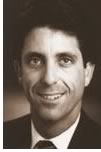
Become a certified protection professional
 When
Architect's Handbook Editor Joseph
Demkin, AIA, returned from the AIA Albuquerque conference on security
January 11–13, the first thing he said he'd learned was that more
architects should pursue certification as a protection professional.
When
Architect's Handbook Editor Joseph
Demkin, AIA, returned from the AIA Albuquerque conference on security
January 11–13, the first thing he said he'd learned was that more
architects should pursue certification as a protection professional.
Security officials recognize and respect the CPP designation conferred by the American Society for Industrial Security (ASIS), yet very few architects have passed the certification process, he noted. The reason that clients admire it and so few architects have this certification: It ain't easy.
 Trial
by fire?
Trial
by fire?
Although "not quite as brutal as taking the architectural registration
exam," getting the certification was a "trial of fire,"
Randy Atlas, PhD, AIA, CPP, said of the process.
"The CPP is sort of like taking the master's level of comprehensive examination. It is a very broad-based examination of knowledge and skills, including due-process, premise of liability, and other legal issues in areas from nuclear security to restaurant and hospitality security," Atlas explained. "It's very comprehensive and time consuming."
Is it worth it?
"In about two hours I am meeting with the security director from Miami-Dade Community College," Atlas said in a recent interview. "Here is a man running security for a fairly large community college, and one of the first things he noted when we first met was the fact that I was a CPP. The dean, administrator, and other executives in the room had no idea what that was. But that security chief knew right away we could talk seriously about his business. He goes to the ASIS conferences and reads his Security Management magazine. He knows that someone with the CPP credentials is on the A list."
Getting started
Atlas recommends ASIS membership for any architect interested in security
design. The society (which long ago outgrew its name "industrial
security") offers study courses for taking the certification exam,
a magazine to keep up with latest developments, and plenty of opportunities
to network with knowledgeable people.
"I'm the token architect on the ASIS Security Architecture and Engineering Committee, along with a pool of engineers," said Atlas, who has also been a member of the AIA Committee on Architecture for Justice for almost 25 years.
With a lifelong interest in justice-facilities architecture (his uncle was Miami Beach chief of police), an architecture degree from the University of Illinois (where he also worked for the National Clearinghouse for Criminal Justice Planning and Architecture), a PhD in criminology, and a quarter century of experience in the field, Atlas has quite a head start on most architects. And he encourages others to join him.
"My quest for the last 25 years has been to teach architects how to ask about security issues and teach security officials how to ask for good architecture; to think in terms of performance rather than prescriptive programmatic specifications," he said. "From the beginning of my career I have worked to straddle the worlds of architecture and criminal justice. And it's true that credentials are the quickest way to get beyond the first impression criticisms: 'Oh he's just an architect, what does he know?' or 'He's just a security consultant, what does he know about architecture?'"
Copyright 2001 The American Institute of Architects. All rights reserved.
![]()
|
To learn more about the American Association for Industrial Security, visit their Web site. You can contact Randall Atlas, PhD, AIA, CPP, president, Counter Terror Design Inc., in Miami via email or visit his Web site. Got a BEST PRACTICES tip on any subject that you'd like to share with your peers via AIArchitect This Week? Send an email to Managing Editor Stephanie Stubbs and tell her what it's about. We'll get in touch—we'll even write it for you! |
|